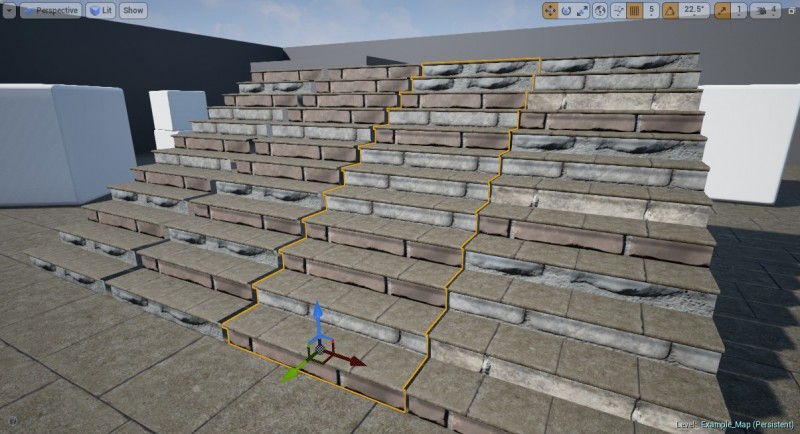When creating levels for games, you will often want to place sequences of terrain features which repeat, for example: stairs, fences, and other repetitive details.
When making stairs, you could model an entire staircase in your 3D-modelling package specifically for the area at hand, but that requires you (or your artists) to make a lot of customised, single-use meshes.
Alternatively, you could model individual steps (or a mesh with a small number of steps) and repeat those until your staircase is the right height. Constantly using the same model will most likely make the repetitive use of the same texture extremely obvious and jarring.
This article proposes a solution to this problem: to create a number of unique meshes which are all variations on the same section of the repeating terrain, and to then use a blueprint to automatically select and place the individual meshes to build up the desired length of terrain.
For example, to model a dozen variations of a single step, and then have a blueprint which randomly (or sequentially) picks one of those variations and places it appropriately until it has built the entire staircase.
This allows the level designer to quickly and easily create repetitive terrain features, each with a unique look, and without requiring custom assets to be made for each individual use case.

Four sets of stairs generated from four step models using the system described in this tutorial.
